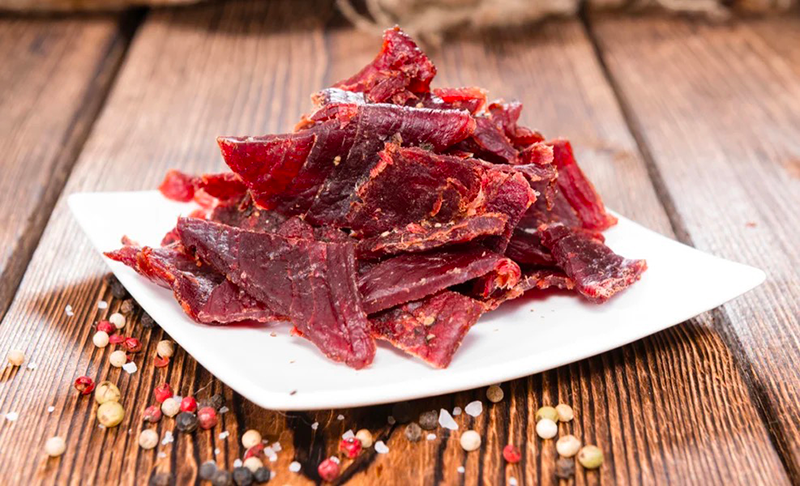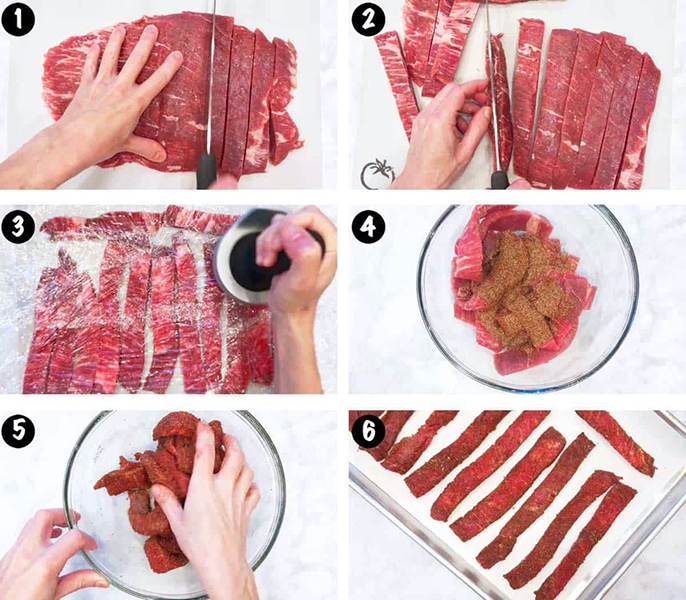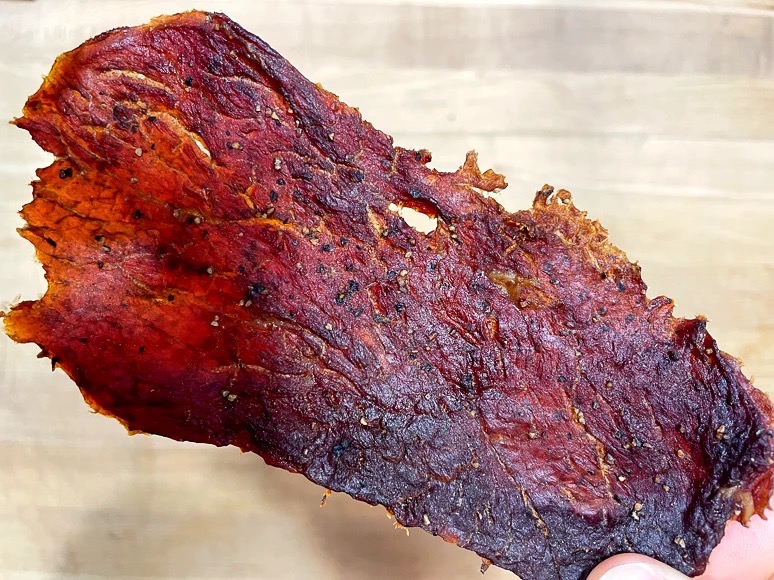
Content Menu
● Understanding Jerky
● Choosing the Right Meat
● Ingredients for Marinade
● Step-by-Step Guide to Making Jerky
>> Step 1: Prepare the Meat
>> Step 2: Dehydrate the Jerky
● Tips for Perfect Jerky
● Understanding Dehydration Techniques
>> Benefits of Using a Food Dehydrator
>> Common Mistakes When Making Jerky
● Enhancing Flavor Profiles
>> Sweet and Spicy Jerky
>> Smoky Jerky
>> Herb-infused Jerky
● Storing Your Jerky Properly
● Conclusion
● FAQ
>> 1. What type of meat is best for making jerky?
>> 2. How long should I marinate the meat?
>> 3. What temperature should I set my dehydrator?
>> 4. How can I tell when my jerky is done?
>> 5. How should I store my homemade jerky?
● Citations:
Making jerky at home is a rewarding process that not only allows you to create delicious snacks but also gives you control over the ingredients used. A food dehydrator is an excellent tool for this task, as it provides a consistent temperature and airflow, ensuring that your jerky dries evenly. This guide will walk you through the steps of making beef jerky in a food dehydrator, including tips, tricks, and frequently asked questions.

Understanding Jerky
Jerky is dried meat that has been seasoned and preserved. The drying process removes moisture, which inhibits bacterial growth, allowing the jerky to be stored for longer periods without refrigeration. While beef is the most common meat used for jerky, you can also make jerky from turkey, venison, or even fish.
Choosing the Right Meat
When selecting meat for jerky, it's essential to choose lean cuts to avoid excess fat, which does not dehydrate well. Here are some recommended cuts:
- Top Round
- Bottom Round
- Eye of Round
- Flank Steak
These cuts are not only lean but also relatively inexpensive, making them ideal for homemade jerky.
Ingredients for Marinade
A good marinade enhances the flavor of your jerky. Here's a simple marinade recipe:
- 1 cup soy sauce (low sodium)
- 1/4 cup Worcestershire sauce
- 1/4 cup brown sugar
- 1 teaspoon garlic powder
- 1 teaspoon onion powder
- 1 teaspoon black pepper
- Optional: red pepper flakes for heat
Step-by-Step Guide to Making Jerky
Step 1: Prepare the Meat
1. Slice the Meat: Freeze your chosen cut of meat for about 30 minutes to firm it up, making it easier to slice. Cut the meat against the grain into strips about 1/4 inch thick.
2. Marinate: Combine all marinade ingredients in a bowl. Place the sliced meat in a zip-top bag or a shallow dish and pour the marinade over it. Seal or cover and refrigerate for at least 12 hours, preferably 24 hours for maximum flavor.
Step 2: Dehydrate the Jerky
1. Remove Excess Marinade: After marinating, take the meat out and pat it dry with paper towels to remove excess moisture.
2. Arrange on Dehydrator Trays: Lay the strips out in a single layer on the dehydrator trays, ensuring they do not touch or overlap.
3. Set the Dehydrator: Preheat your food dehydrator to 160°F (71°C). This temperature is crucial for food safety as it helps eliminate any harmful bacteria.
4. Dehydrate: Dry the meat for about 4 to 6 hours. Start checking for doneness after four hours. The jerky should be dry but still pliable; it should bend without breaking.
5. Cool and Store: Once done, let the jerky cool completely before storing it in airtight containers or vacuum-sealed bags. Properly stored jerky can last several months.

Tips for Perfect Jerky
- Experiment with Flavors: Feel free to customize your marinade with different spices or sauces like teriyaki or hot sauce.
- Check Consistency: Different dehydrators may have varying drying times; check your jerky regularly after the four-hour mark.
- Use a Meat Thermometer: If you're unsure about doneness, use a thermometer to ensure it has reached an internal temperature of at least 160°F (71°C).
Understanding Dehydration Techniques
Dehydration is not just limited to making jerky; it's a versatile method that can be applied to various foods such as fruits, vegetables, and herbs. The principle behind dehydration is simple: removing moisture from food prevents spoilage and enhances flavor concentration.
Benefits of Using a Food Dehydrator
- Consistent Temperature Control: Unlike an oven, dehydrators maintain low temperatures consistently, which is crucial for effective drying without cooking the food.
- Energy Efficiency: Dehydrators use less energy compared to an oven running for several hours.
- Versatility: Beyond jerky, you can dehydrate fruits like apples and bananas for snacks or vegetables like tomatoes and peppers for soups and stews.
Common Mistakes When Making Jerky
Making jerky can be straightforward, but there are common pitfalls that can affect your final product:
- Using Fatty Cuts of Meat: Fat does not dehydrate well and can lead to spoilage if not consumed quickly.
- Inadequate Marination Time: Not allowing enough time for the marinade to penetrate can result in bland jerky.
- Overcrowding Trays: Placing too many pieces on one tray can prevent proper airflow, leading to uneven drying.
Enhancing Flavor Profiles
The beauty of homemade jerky lies in its versatility regarding flavors. Here are some ideas to enhance your jerky experience:
Sweet and Spicy Jerky
Combine sweet elements like honey or maple syrup with spicy ingredients such as cayenne pepper or chili powder. This combination can create a delightful balance that appeals to those who enjoy complex flavors.
Smoky Jerky
Incorporate liquid smoke into your marinade for a rich smoky flavor without needing a smoker. This addition can elevate traditional flavors and give your jerky a unique twist.
Herb-infused Jerky
Add fresh herbs like rosemary or thyme into your marinade for an aromatic touch that complements the meat beautifully.
Storing Your Jerky Properly
Once you've made your delicious homemade jerky, proper storage is crucial to maintain its quality:
- Store in airtight containers or vacuum-sealed bags.
- Keep in a cool, dark place; refrigeration can extend shelf life significantly.
- For longer storage, consider freezing your jerky; it can last up to six months when frozen properly.
Conclusion
Making jerky in a food dehydrator is not only straightforward but also allows you to enjoy a healthy snack tailored to your taste preferences. With just a few ingredients and some patience, you can create delicious homemade jerky that rivals store-bought options. Whether you prefer classic flavors or spicy variations, experimenting with different marinades can lead to exciting results.

FAQ
1. What type of meat is best for making jerky?
Lean cuts such as top round, bottom round, or flank steak are ideal because they contain less fat.
2. How long should I marinate the meat?
For best results, marinate your meat for at least 12 hours; however, 24 hours will yield more flavor.
3. What temperature should I set my dehydrator?
Set your dehydrator to 160°F (71°C) to ensure safe drying and effective moisture removal.
4. How can I tell when my jerky is done?
The jerky should be dry but still pliable; it should bend without breaking and have no visible moisture left.
5. How should I store my homemade jerky?
Store your jerky in airtight containers or vacuum-sealed bags in a cool, dark place; it can last several months if properly stored.
Citations:
[1] https://hiphipgourmet.com/recipe-for-beef-jerky-in-a-dehydrator/
[2] https://peopleschoicebeefjerky.com/blogs/news/how-to-make-beef-jerky-in-a-dehydrator
[3] https://www.everydaymaven.com/how-to-make-beef-jerky-in-a-dehydrator/
[4] https://littlehousebigalaska.com/2022/01/beef-jerky-food-dehydrator.html
[5] https://www.youtube.com/watch?v=Wj-xTmebJBQ
[6] https://www.allrecipes.com/recipe/142948/docs-best-beef-jerky/
[7] https://www.jerkyholic.com/how-to-make-beef-jerky-with-a-dehydrator/
[8] https://www.foxvalleyfoodie.com/homemade-beef-jerky/
[9] https://fyi.extension.wisc.edu/safepreserving/files/2015/07/Making_Safe-Jerky_in_a-Home_Dehydrator.pdf
[10] https://peppergeek.com/spicy-beef-jerky-recipe-for-dehydrator/











